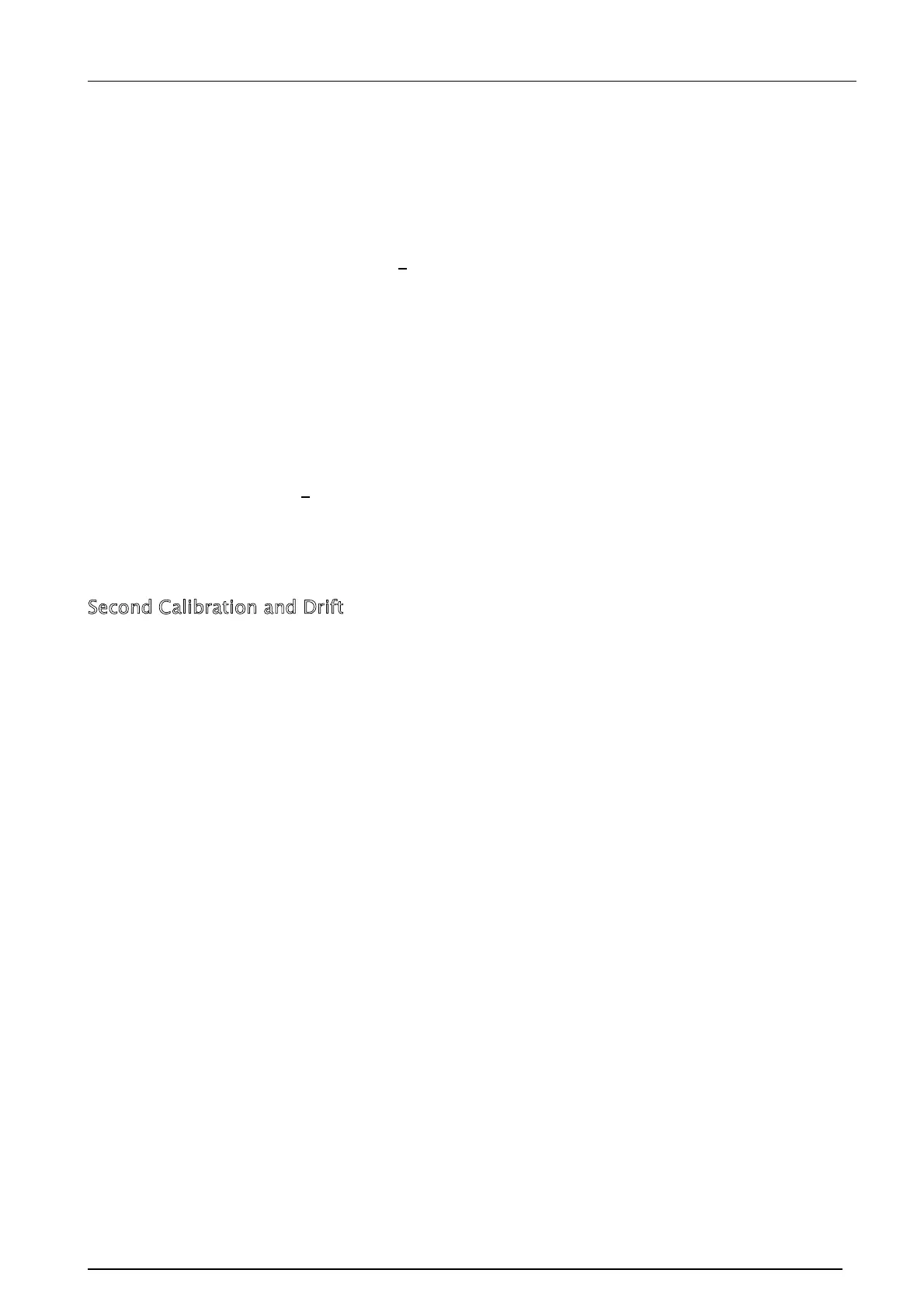dosemeter User Manual
Page 64
For example:
First Calibration
Level of Reader calibrator = 114.0dB
1st calibration level reported to Reader by dosemeter = 114.1dB.
Calibration Offset = -0.1dB. (114.0 114.1)
The Reader will correct all data from this dosemeter by -0,1dB until the next time that
the dosemeter is reset and recalibrated.
Second Calibration
Level of Reader calibrator = 114.0dB
2nd calibration level reported to Reader by dosemeter = 113.9dB.
Drift = 0.2dB. (114.1dB 113.9dB)
The Reader will correct all data from this dosemeter by -0.1dB until the dosemeter is
reset.
Second Calibration and Drift
In most applications, drifts of between +/-0.5dB are acceptable; that is that the second
calibration check differs from the first calibration results by up to +/-0.5dB.
Drift can occur for a number of reasons, some of which are:
1. A temperature change between the 1st and 2nd calibration in either the
dosemeter or Reader.
2. A barometric pressure change between the 1st and 2nd calibration in either the
dosemeter or Reader.
3. A relative humidity change between the 1st and 2nd calibration in either the
dosemeter or Reader.
4. Battery level in the dosemeter.
The dosemeter Reader contains an acoustic calibrator and sensors which compensate
for temperature, pressure and humidity. This ensures that the calibration level provided
by the Reader unit is consistent.
However the dosemeter may not be at the same temperature, pressure or humidity as
the Reader at the point of calibration.
It is important that both the dosemeter and Reader are left together, in the same
environment, for a period of at least 30 minutes prior to calibration.
This allows the temperature of both the Reader and the dosemeter to stabilise.
